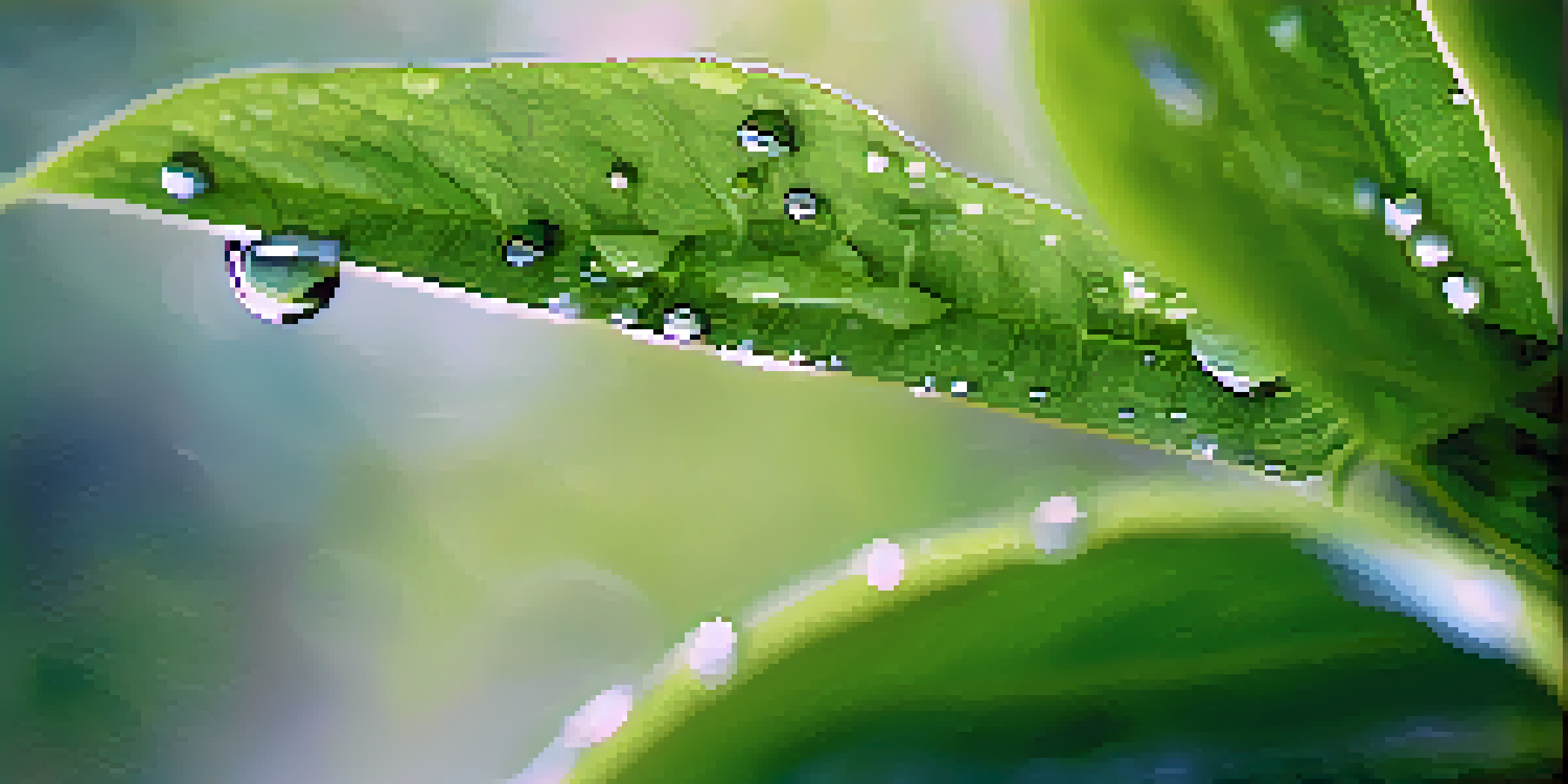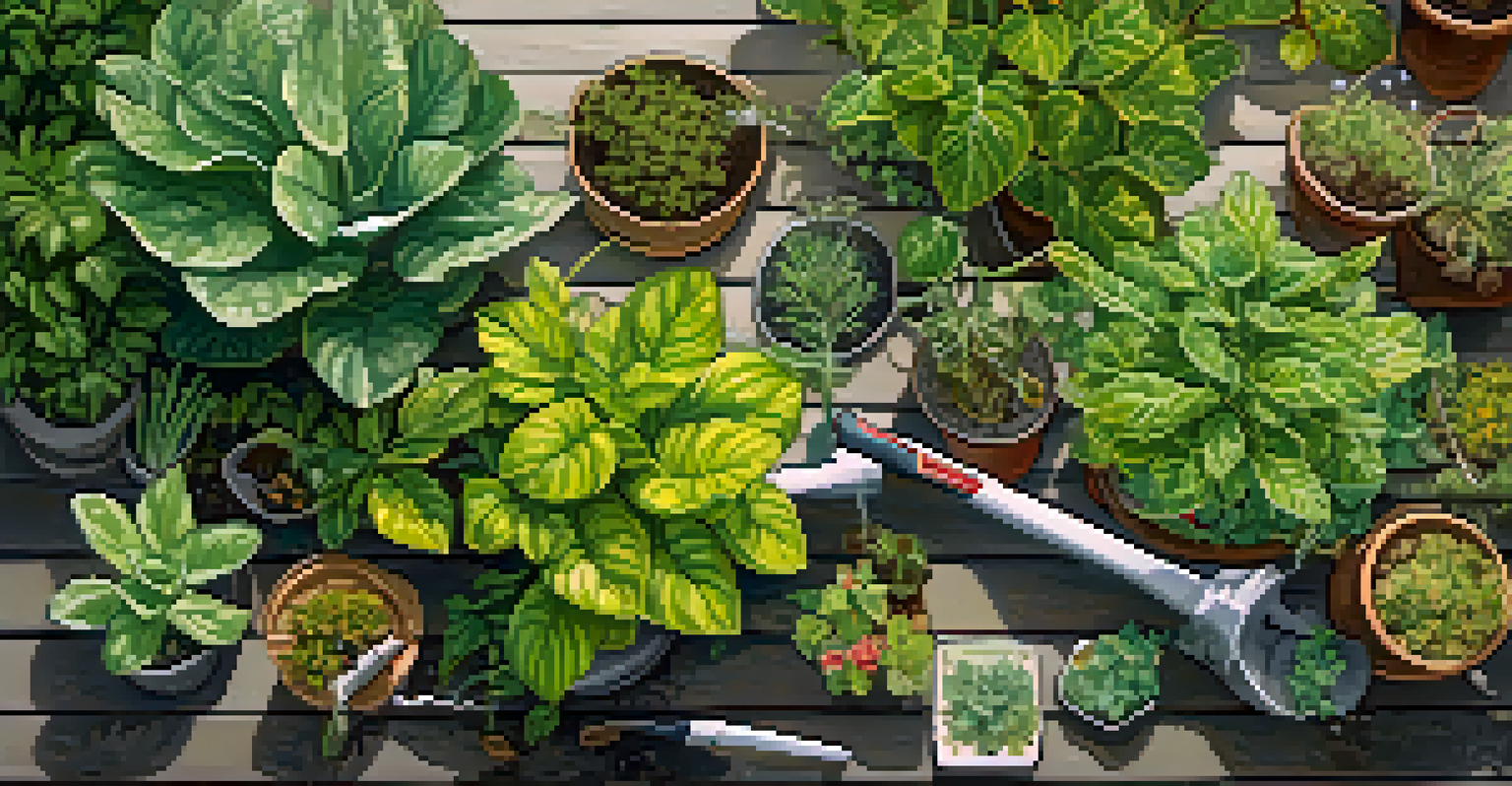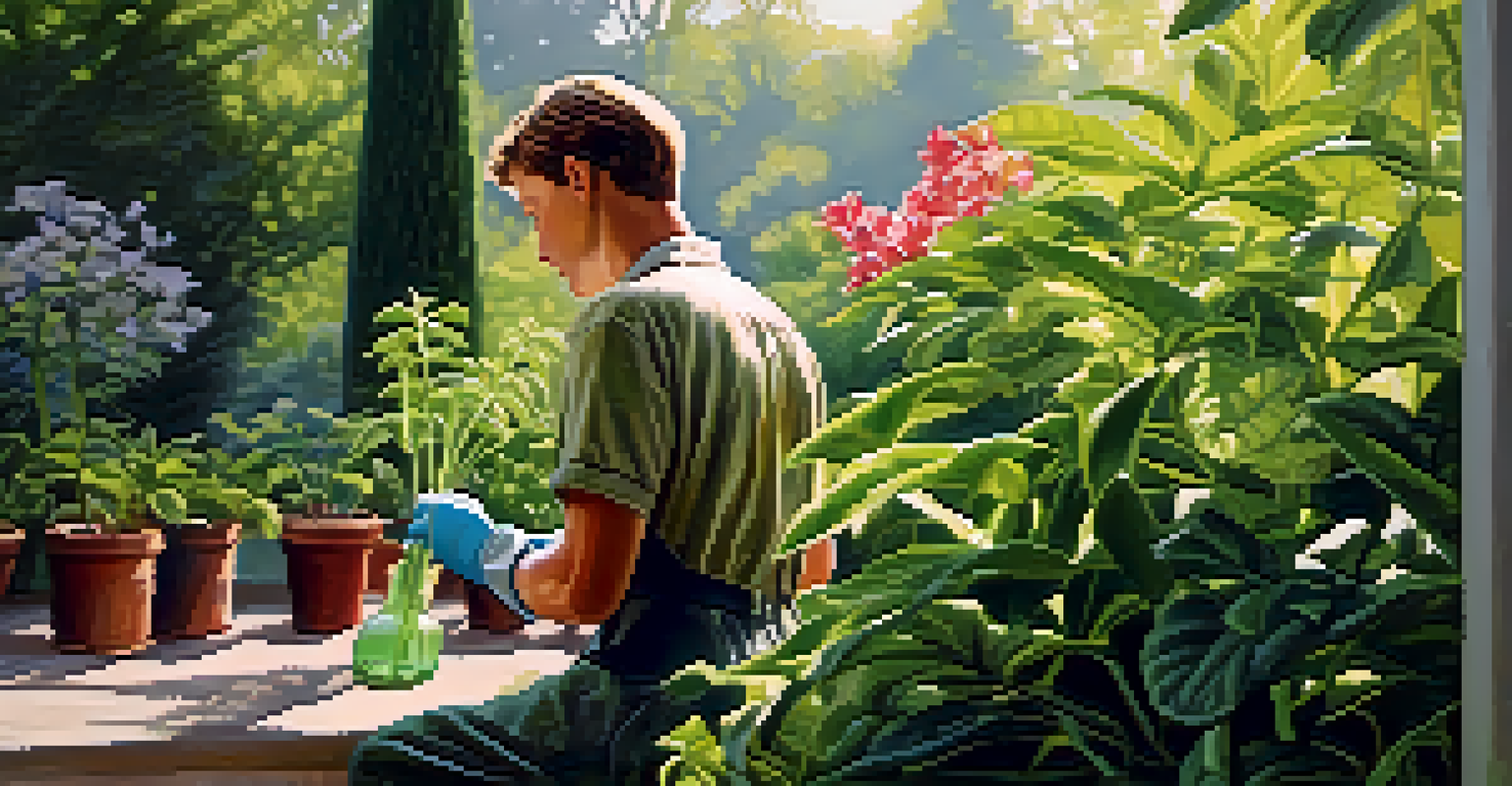Identifying Common Plant Ailments and Their Natural Remedies

Understanding Common Plant Diseases and Pests
Plants, much like humans, can suffer from various ailments that impact their health and growth. These issues can stem from diseases, pests, or environmental stressors. Recognizing the symptoms early can make all the difference in saving your beloved greenery.
The love of gardening is a seed once sown that never dies.
Common signs of distress include yellowing leaves, wilting, or unexpected spots. Identifying whether the problem is a disease or a pest can be tricky, but observing the leaves and stems closely is a great start. For example, aphids might be present if you spot a sticky residue on your plants.
By understanding the different types of ailments, you'll be better equipped to tackle them effectively. The next sections will delve deeper into specific problems and the natural remedies that can help restore your plants to their former glory.
Recognizing Fungal Infections in Plants
Fungal infections are among the most common problems that can plague your plants. Signs include fuzzy growths on leaves, discoloration, or even leaf drop. These infections thrive in damp conditions, making it crucial to monitor your plant's environment.

One of the best natural remedies for fungal infections is baking soda. A simple solution of water and baking soda can help create an alkaline environment that deters fungal growth. Just mix one tablespoon of baking soda with a gallon of water and spray it on affected leaves.
Identify Plant Ailments Early
Recognizing symptoms of diseases and pests early can significantly improve the chances of saving your plants.
Additionally, ensuring proper air circulation and avoiding overwatering can prevent these infections from taking hold. Keeping your plants healthy is all about balance, so stay vigilant in monitoring their needs.
Dealing with Pests: Aphids and Spider Mites
Aphids and spider mites can be a gardener's nightmare, but identifying them is the first step in management. Aphids are tiny, often green or black insects that cluster on new growth, while spider mites create fine webs on the underside of leaves. Both can stunt growth and spread diseases.
To plant a garden is to believe in tomorrow.
To combat these pests naturally, try using a mixture of water and dish soap. This solution will coat the pests and suffocate them without harming your plant. Spray it on the infested areas, and repeat every few days until the problem is resolved.
Another effective method is introducing beneficial insects, such as ladybugs, which feast on aphids. Creating a balanced ecosystem in your garden can help keep these pests at bay and promote healthy plant growth.
Addressing Leaf Discoloration: Nutrient Deficiencies
Discolored leaves can often signal nutrient deficiencies, which are essential for healthy plant growth. Yellowing leaves may indicate a nitrogen deficiency, while a lack of magnesium can cause leaf edges to turn brown. Understanding these signs is key to providing the right care.
A simple natural remedy is to use compost or organic fertilizers, which release nutrients slowly and sustainably. For instance, a balanced compost tea can deliver a boost of essential nutrients to your plants without the risk of over-fertilizing.
Natural Remedies for Plant Health
Using natural solutions like baking soda and compost can effectively combat common plant issues without harmful chemicals.
Regularly checking soil pH can also help you understand nutrient availability. By maintaining a balanced soil environment, you can ensure that your plants receive the nutrients they need to thrive.
Controlling Mildew with Natural Solutions
Powdery mildew is a common fungal disease that appears as a white, powdery coating on leaves. It thrives in high humidity and poor air circulation, often affecting plants during warm, damp weather. Early intervention is critical to prevent it from spreading.
A natural remedy for powdery mildew includes a simple mixture of water, baking soda, and a few drops of dish soap. Spray this solution on affected areas to create an environment that is less hospitable to the mildew.
Additionally, increasing air circulation by spacing out your plants and avoiding overhead watering can significantly reduce the chances of mildew infestation. Keeping your plants dry and well-ventilated is essential for their overall health.
Mitigating Root Rot: Signs and Solutions
Root rot is a serious condition often caused by overwatering or poorly draining soil. Signs include wilting plants, discolored leaves, and a foul smell coming from the soil. Once root rot sets in, it can be challenging to recover the plant, so early detection is crucial.
To combat root rot naturally, first, remove the plant from its pot and inspect the roots. Trim away any mushy or blackened roots and repot the plant in fresh, well-draining soil. This helps to rejuvenate the plant and gives it a chance to thrive again.
Preventative Care is Key
Regular inspection and proper care are essential practices to maintain plant health and prevent future problems.
In the future, ensure that your pots have drainage holes and allow the soil to dry slightly between waterings. A little prevention can go a long way in keeping your plants healthy.
Preventing Sunburn: Protecting Your Plants
Just like us, plants can get sunburned if they’re not properly acclimated to bright sunlight. Signs of sunburn include bleached leaves and crispy edges. Understanding your plant's light needs is essential for keeping them healthy.
One natural solution to prevent sunburn is to gradually acclimate your plants to direct sunlight. Start by placing them in a partially shaded area and gradually increasing their exposure over a week or two. This gentle transition helps them adjust without shock.

Additionally, using shade cloth or strategically placing larger plants to provide some cover can help protect more delicate species. Keeping your plants happy means giving them the right amount of light they need to flourish.
Maintaining Plant Health through Proper Care
The best way to combat plant ailments is through preventative care. Regularly inspecting your plants for signs of distress and providing them with the necessary nutrients can go a long way in maintaining their health. A little attention today can prevent big problems tomorrow.
Incorporating natural remedies, like compost and organic fertilizers, helps support healthy growth while being environmentally friendly. It's all about finding a balance that works for your particular plants and their environment.
Remember, every plant is unique, so take the time to learn about their specific needs. By fostering a nurturing environment, you'll not only enjoy beautiful plants but also foster a deeper connection with nature.